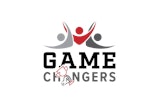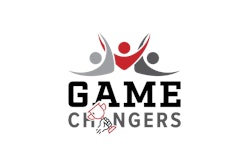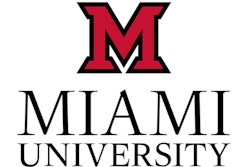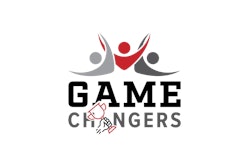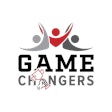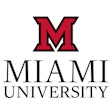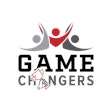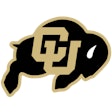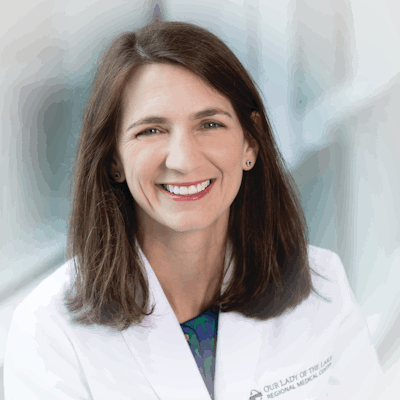
Dr. Catherine O’Neal played basketball at a high school with a graduating class of fewer than 20 and no football program. Her first experience of any kind with football came as a spectating student at Louisiana State University, a historic power in what most consider the premier college football league in the country — the Southeastern Conference. In 2003, O’Neal earned her medical degree from LSU Health Sciences Center in New Orleans, where she currently serves as associate professor of clinical medicine. She’s also chief medical officer and director of infection prevention at Our Lady of the Lake Regional Medical Center in Baton Rouge. On May 31, 2022, SEC commissioner Greg Sankey named O’Neal the league’s first-ever chief medical officer, having previously honored her contributions to the SEC’s Return to Activity and Medical Guidance Task Force during the COVID-19 pandemic. AB senior editor Paul Steinbach asked O’Neal to reflect on her first year in the new SEC post.
How long were you part of the SEC’s Medical Guidance Task Force?
That started in April of 2020, and we met for the last time in the spring of 2022, so two years.
Had anything like that existed at the SEC prior to your involvement, or was that a first?
Not of my understanding. The SEC had been discussing the addition of a medical advisor prior to the pandemic starting, but had not pulled the trigger and gone through the process. And then when the pandemic started, my understanding from the commissioner was that the best way to hurry up and get people together and start making decisions was to put a collective group together. Luckily, it worked really well.
Did the SEC approach you personally about the chief medical officer role, or did you lobby for it?
We had conversations through the pandemic about their prior thoughts about having a medical advisor. We didn’t have those conversations necessarily about me, but about how they found themselves in this place of having almost like a council for advice and what would be the best way going forward. Should we continue in this current format? It’s worked so great to be able to collectively discuss athletics care in a different way than they had before. I think they liked it and wanted to understand if they continued to look for one person, what would that role look like? And then ultimately, as we decided that the COVID Medical Task Force would not continue, I think I was reaching a point in my career in which I was sort of looking for a new project. The conference was looking for a transition and asked me to step in and sort of lead them through this transition. It’s worked really well.
And when it was still a task force, how many members were on the task force?
One from each school, so 14.
In announcing that you were assuming the advisor position, the SEC mentioned that you were helpful in navigating COVID-19. We’re all tired of talking about the pandemic, but what was the most challenging aspect as it related to college athletics from your standpoint?
From my personal standpoint, it was actually understanding what sports medicine is. I live in a hospital for the most part, except when I’m living at my house. It’s a different environment, a different crew of patients and different activities — far more social on the college athletics part. So, navigating how they would interact with COVID-19 as student-athletes, but more importantly as college students, and then understanding how you could mitigate the student-athlete part, but you could not mitigate the college student part. Trying to educate around things that the department wants you to do to stay safe, but then also trying to educate about life choices, so that you can continue to play. I think that was the most challenging. And, honestly, I think that if everybody had been able to accept some of the mitigation as easily as college athletes, we probably would’ve been in a better spot.
Is that right?
They’re so motivated to play. They chose carefully when they were in season versus out of season and when they knew they had big games. Continuing to go on with life, but also trying to keep your schedule in mind as you make every-day choices. It was a really great group to work with.
Was the biggest challenge from a let’s-get-back-to-the-field-as-soon-as-possible motivation standpoint the social distancing aspect or vaccination, or both?
It was the testing. Like you said, it’s so hard to relive all of this because we’re so tired of it. But if you remember, in 2020, when the conversation was, “Oh, my goodness, this could really harm athletes, and so we have to do all of these things to safeguard the fact that this could harm them,” because we just weren’t sure what COVID-19 would bring to the 20-year-old population. Lots of discussions about myocarditis then, and what we needed to do was be able to test them. When I started on the COVID task force, tests were not available for the public, so the month we began talking, we had zero tests available. By the end of July, when everybody’s getting ready to go to practice, tests were just coming out but hard to acquire, especially at some of our campuses that aren’t associated with larger medical centers. And then by the time we started to play, we finally saw that pipeline come to fruition, and testing was a little bit more available. If that timeline had not worked out from a testing standpoint, we very possibly would not have been able to start playing at the time we did. Timing’s everything, and it worked out.
You’re now at the one-year mark in your current SEC role. Is there a term limit to your service as chief medical advisor, or is it an indefinite post?
As long as I’m meeting expectations, hopefully it’s an indefinite post.
And now that the worst of COVID — knock on wood — is in the rearview mirror, what exactly are you expected to do for the SEC as chief medical advisor?
The goal of having a chief medical advisor is really to coordinate the efforts of the sports medicine teams at each campus, so that we can make sure that we are providing exceptional health care to our student-athletes, and that that healthcare allows them to fully capture their potential during their college career. That is the goal statement, and my job is to develop a program that allows us to achieve that goal. Who is involved in that goal? It’s our sports medicine teams. But when you think about sports medicine, that’s your docs, your trainers, your mental health staff, your nutrition staff, and your strength and conditioning. You have a very large team when you look at sports medicine, and what we’ve spent the first year doing is developing some small groups around each of those groups and then coming up with our own programmatic goals — really focusing on mental health this first year, because it’s such an important part of wellbeing in college athletic health right now. But each one of those groups is meeting with me mostly monthly and developing their own sets of goals so that we can work together on our goal-setting and ultimately be able to provide some evidence that we are pushing the envelope and providing great care for our student-athletes. In a nutshell, that’s sort of what the trajectory of this year has been.
Are you expected to meet face to face, or attend regular events?
A lot is accomplished over Zoom. We have 14 schools. It’s impossible to get everybody together frequently. But then there are some really nice championships, where most of our schools are going to be there, and a lot of these leaders within the sports medicine teams are going to be there, as well. So, there are some opportunities to meet in person as the year progresses.
You mentioned pushing the envelope in terms of what you guys are doing. Is the SEC on the cutting edge, or do other conferences have medical advisors, too?
Many conferences have some sort of either medical advisor or medical panel — a task force, if you will — that meets regularly. The Pac-12 has one that I would say is fairly long-standing. I don’t know how long they’ve been meeting regularly, but it’s been years, and their structure has helped to support some research in their conference over time, which I think has been helpful for the whole sports medicine medical community. Each conference does it a little bit differently, but they all have their form of it.
Would there ever be an occasion for the conferences to share medical information with each other?
Absolutely. I think if you’re talking about medicine, sharing information and having collaborative goals is how you make the world go round. You cannot advance in medicine without collaboration. I think that that is going to be something that ultimately comes up as one of our long-term goals for our conference — to be more collaborative with some of our NCAA Division I schools and definitely within the Power Five. To get there, we need to start small. One of the things that we did recently was several of us traveled to the Pac-12’s Health Equity Conference at UCLA. So, we do have some collaboration already. I think that that is only going to continue as we focus on a very important topic, which is sports medicine and athlete health.
You mentioned goal-setting as part of the first year in your current SEC post. Looking back, have there been any major milestones or achievements that you’re proud of during that first year?
I think the most important milestone happened in October. I spent the end of August and through September meeting with every school and each large component of their sports medicine program over Zoom. A lot of intense hours and a lot of “get to know you” and a lot of feedback for the conference. We submitted a report for our presidents and chancellors and athletic directors beginning of October, and you just never know how that’s going to go. This is the first time they’ve seen a medical report given to them with some action items — our first way forward. And I think that the reason why it was a big milestone is because they were enthusiastic, supportive and really had great feedback. “This is a great way to go.” “Push as hard as you want.” “We’re all behind this effort.” And I just didn’t know what to expect. These are very competitive schools. You expect a little bit of animosity in working together from time to time, and there’s just none of that. This is about student health, and they all have a common goal. That’s why goal-setting is so important. These are athletes. They like goals, and they like to get there quickly. So, that was a big milestone, just to know that the full backing of all of our presidents and chancellors and our athletic directors is behind us.
We witnessed two particularly scary moments during this past NFL season — the prone fencing posture of concussed Miami Dolphins quarterback Tua Tagovailoa and the cardiac arrest and collapse of Buffalo Bills safety Damar Hamlin. As a physician, how do you react when you initially see those types of episodes on a football field?
Honestly, as a physician, you think, “I hope they practice this, and I hope they’re prepared.” And I don’t say that lightly. We code people in the hospital every single day, because we’re supposed to — the sickest of the sick live here, right? — and still we practice. And that practice goes beyond in-person practice. I was talking to a group of athletes recently, and I talked about when I played high school basketball. My dad used to tell me, “Before you go to sleep, you need to picture yourself playing.” Most athletes do that. It’s part of mental preparedness. We do the same thing in medicine. When we think about going to codes, anything can happen. There are a thousand different ways that it could go, and you have to be prepared mentally for all of those things. Our sports medicine teams have to be prepared for a ton of different scenarios to occur on the field. I saw it on TV, stopped and realized what was happening, and I immediately thought, “God, I hope that they’re prepared,” and that preparedness is so multifactorial.
It certainly seemed like it made all the difference in the Demar Hamlin situation. He is walking and talking because of the quick actions of first responders.
That’s right.
Were there any triggering moments that inspired the SEC to reexamine what member schools are doing or could do differently? Did the SEC react in any way to either of these NFL events?
Yes, of course we did. We meet monthly with our groups, so obviously it took up quite a bit of conversation over the next month as part of our standard agenda, just to make sure everybody had time to talk it out, because this could be you at any moment. And because we all watched it, just to make sure we all felt like we could take it as a learning lesson — “Let’s go back through our checklist. Do we feel prepared?” While we do that all the time, these sorts of incidences do make you take it with a different light and go back through your checklist again. And, you know, we are an organization that has lots of different sports, not just football, and lots of different scenarios, including different people who travel with our teams. We took the NFL 60-minute meeting and compared it to our SEC Timeout, which for the SEC is new. It was the very first thing that we adopted as I took on the chief medical officer role. It was changing the way that we prepare before our games, and that’s having our medical teams meet. We were not doing that consistently before the 2022-23 season. So, we took our Medical Timeout, which is relatively new, compared it to the NFL 60-Minute Medical Meeting, just to make sure that — were there any inconsistencies — we could say, “Let’s improve in this way.” And then the other thing was pulling out our emergency action plans, which is an NCAA standard, going through it again and saying, “Does anybody need help? Does anybody need a review?” Just checking our list twice.
The SEC Medical Timeout happens before any SEC sporting event?
Yes. It’s about an hour long, where the medical teams get together. Basketball, it’s easy to meet right before the game. The medical teams for football meet about an hour before. Gymnastics, it’s a little bit too crazy with taping right before a meet. They’re all in there for hours before, so everybody’s got their timing different, but it is before the competition and it is with the medical providers there that day to provide care.
Was there anything that the SEC already had in place or changed in terms of heart-screening protocols for every athlete?
We didn’t change it because the SEC treats its cardiac screens as standard now. We did go back through and confirm that, yes, this is a standard cardiac process, but we had put that into place with COVID. We knew everybody’s protocols because COVID required us to know. So, I think we felt very comfortable where we are from a cardiac standpoint.
Had the SEC done anything in terms of cardiac screening prior to COVID?
They had it, they just weren’t all consistent in exactly how they documented and treated the cardiac exam, and it’s because there is no true standard. Besides having a physician actually go through a cardiac history, after that, there are a few different opinions on how far to go. But for Division I, and definitely for the SEC, each athlete does get a physical, a cardiac history, an EKG [electrocardiogram] and an echo [echocardiogram].
Does football receive the lion’s share of your attention?
No, actually, I would say that football does not get the lion’s share. It is, for the most part, one-fifth of our athletic number. Every school has about 500 athletes, and your football rosters are going to be 80 to 100, depending on what time of year you’re counting. I think that it gets that amount of time, which, compared to all of the other sports, is reasonable. During the fall, we talk about it more, but we are so well into the spring right now, and there is so much great baseball and basketball to worry about and think about, and gymnastics, that I do feel like the other sports get quite a bit of attention.
What is your biggest health and safety concern regarding today’s college football players?
My biggest health and safety concern regarding today’s college football players is that student-athletes today are pushed harder younger, and they come to college already with an injury history, already needing rehab, already needing coaching on diet and nutrition, if they’re going to be able to achieve their potential as an SEC student-athlete. Our biggest focus is making sure that we can tackle those challenges with them immediately. You don’t get the best health care in the SEC your sophomore year. You get it the first day you arrive. And that is because you’ve been through a lot already. We have to recognize what that is mentally and physically, and be able to tackle those challenges with you so that you can quickly achieve your potential.
But is there any one risk to a college football player that bothers you the most? Is it head injury?
No. I’m sorry, I can’t give you one. I think there’s a triad. That would be injuries in general. Orthopedic visits for an athlete account for 40 percent of their visits that they make to a physician. Outside of injuries, which is the 40 percent, 60 percent is everything else. Injuries of any sort worry me because they require rehab, they require downtime from your games, and that’s not achieving your potential. Neurologically, concussions have to be — and continue to be — a focus of every team. How to make sure that we’re assessing fairly, how to make sure that we’re recovering well, so that when you come back to play, you’re fully recovered.
Very important for the longevity of your career. And then lastly, your mental health, which plays back into both of those things. You are not going to come back well from an injury if we don’t also work on your mental health. You’re not going to put everything into your game. You’re not going to put everything into your workout, which contributes to injuries. There’s such a mixture of injuries, concussions and mental health, and how they play into each other. We do have to look holistically at the athlete if we’re going to make sure that they’re safe.
Same for all sports?
That’s it. It’s the same triad for all athletes.
The Pro Bowl went to a flag football format this year, and the players seem to love it. Do you envision any changes to the way football is played in the future?
I have not been in this business long enough to speculate on that question at all.
Fair enough. Any parting thoughts?
You know, a young person’s health should not be assumed to be a healthy person’s health. We have our work cut out for us to keep healthy somebody who we push to their limits every day and to keep them healthy when they’re 40 and 50. I’m excited about this job, but it’s really our medical teams who are doing all of the work.














